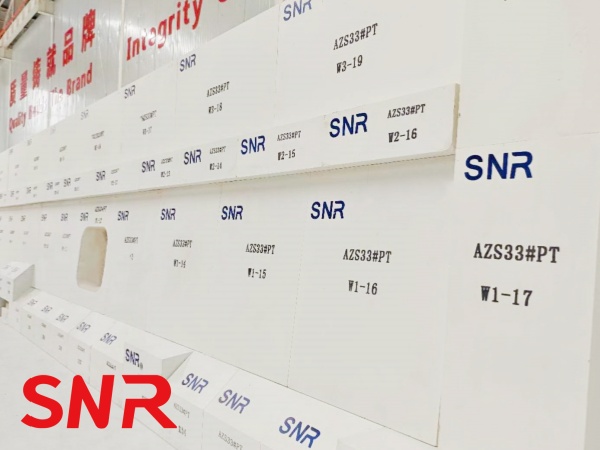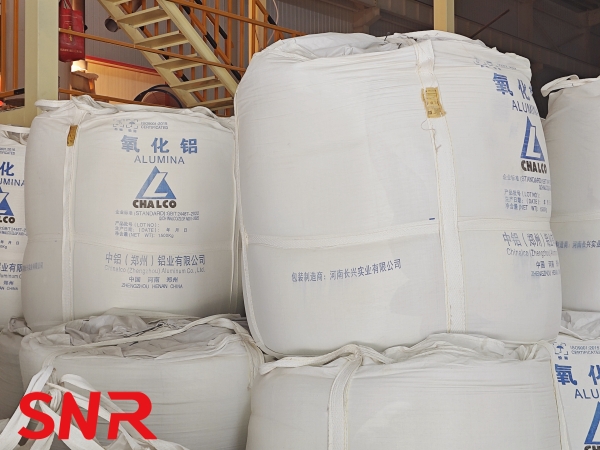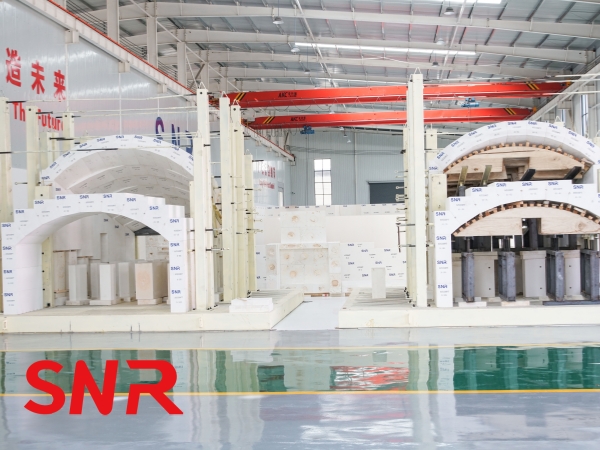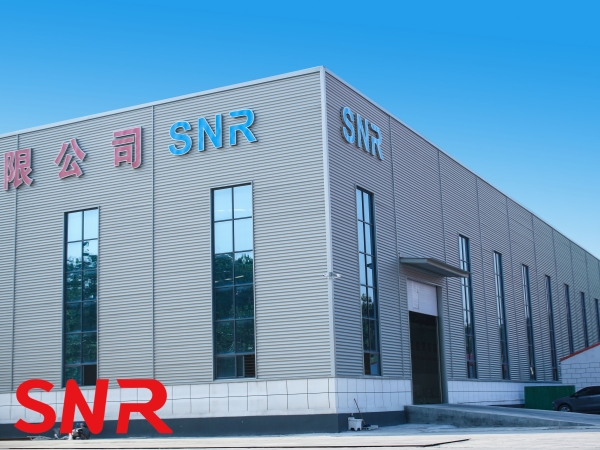
As an indispensable key refractory material for high-temperature industry, the stability of the quality of fused cast AZS blocks is directly related to the operational efficiency, safety performance, and production cost of industrial equipment. However, in the production process of fused cast AZS blocks, shrinkage holes, and cracks, as common defects, seriously restrict the improvement of product quality. Shrinkage, as a kind of structural defect inside the fused cast AZS blocks, not only reduces the effective use area of the blocks but also may become a stress concentration point, affecting the overall strength and durability of the blocks. Cracks, on the other hand, affect the quality of fused cast AZS blocks even more, and their existence not only destroys the integrity of the block body, but also may lead to rapid expansion due to stress in the process of use, and ultimately leading to catastrophic consequences. The purpose of this paper is to explore the causes of shrinkage and cracks in fused cast AZS blocks, and put forward effective strategies to reduce shrinkage and cracks in the production of fused cast AZS blocks. The total is divided into the following points.
1. Reasons for the formation of shrinkage holes in fused cast AZS blocks
2. Reasons for the formation of cracks in fused cast AZS blocks
3. Measures to prevent shrinkage holes and cracks in fused cast AZS blocks.
I. Reasons for the formation of shrinkage holes in fused cast AZS blocks
1. Material properties and solidification process
►Volume shrinkage: When the molten liquid condenses in the sand mold, it will produce volume shrinkage, which is usually between 12% and 15%. This volume reduction results in the formation of shrinkage holes within the fused cast AZS blocks.
►Crystallization process: After the molten zirconia corundum brick is poured into the model, crystallization starts from the mold wall to form the outer skin. During the crystallization process, due to the reduction in the volume of the substance and the precipitation of gases, a liquid-phase cavity is formed inside the brick, and the pressure inside the cavity becomes negative, which further leads to the formation of shrinkage holes.
2.Production process
►Pouring process: During the pouring process, if the material does not fill the model sufficiently, or the pouring speed is too fast resulting in the gas can not escape, will increase the formation of shrinkage holes.
►Cooling rate: The cooling rate also has an important influence on the formation of shrinkage holes. If the cooling rate is too fast, the crystallization rate inside the melt will be uneven, leading to the generation of shrinkage holes.
►Secondary casting: For large electrofused zirconia corundum bricks, primary casting may not be able to completely eliminate shrinkage holes. In this case, secondary casting is required to further reduce the depth and volume of the shrinkage holes. However, the time and quality of the secondary casting need to be strictly controlled, otherwise it may be counterproductive.
3. Casting design
The casting design also has a significant effect on the formation of shrinkage holes in fused cast AZS blocks. Oversizing fused cast AZS blocks, although it can concentrate on the shrinkage hole area, will increase the risk and cost of cracks occurring in the brick body. Therefore, a large number of tests are needed to grasp the most suitable design scheme for products of different shapes and use parts to achieve a reasonable balance.
4.Other factors
►Sodium oxide content: The content of sodium oxide is closely related to the excessive shrinkage of fused cast AZS blocks. Through theoretical analysis and experimental verification, a suitable amount of sodium oxide addition can be determined to reduce the formation of shrinkage holes.
►External environment: Changes in the external environment (e.g. temperature, humidity, etc.) may also have an effect on the formation of shrinkage holes during the casting and cooling process.
II. Reasons for the formation of cracks in fused cast AZS blocks
1. Material properties and composition ratio
Fused cast AZS blocks, are characterized by a narrow crystallization temperature range and low thermal conductivity. This leads to an uneven temperature field along the cross-section during the hardening process, which makes it easy to produce internal and external cracks. In addition, plagioclase zirconia in fused cast AZS blocks will undergo a crystallographic transformation during cooling and decrystallization, especially from the high-temperature cubic crystal system to the low-temperature monoclinic crystal system, which will be accompanied by a large volume expansion, which is also an important reason for the formation of cracks.
2.Production process
►Pouring process: In the pouring process, if the surface of the casting mold is not flat or there are gases, impurities, etc., it will lead to uneven growth of the thickness of the initial condensation shell. The thermal stress is concentrated in the thin condensation shell, which makes it easy to form the first crack. Has cracked part of the residual liquid may be injected to fill, but the residual liquid solute concentration, and crystallization of the grain boundaries than the other parts of the condensation shell is softer, easy to shorten the melt condensation caused by the concentration of stress, resulting in the second crack.
►Cooling rate: Fused cast AZS blocks in the cooling process, the surface layer of the temperature drop is usually faster than the internal, resulting in the existence of a large temperature difference between the inner and outer layers. This temperature difference is caused by the brick shortening inconsistency between the inner and outer layers, the surface layer first condensation shortening by the inner layer of the unconsolidated part of the obstruction, resulting in thermal stress, which in turn causes cracks. The size of the thermal stress is generally proportional to the size of the temperature difference.
►Annealing process: The annealing process on the formation of cracks in fused cast AZS blocks also has an important impact. If the annealing is not sufficient or the annealing temperature is not properly controlled, it will lead to excessive residual stress inside the block body, which will cause cracks in the subsequent use of the process.

3. Use of the environment
Fused cast AZS blocks in the process of use, long time in the high temperature environment, the temperature change is frequent and violent. This temperature change will lead to the block body internal stress, when the stress exceeds the tensile strength of the material itself, cracks will occur. Especially in the process of equipment startup and shutdown, the temperature change is particularly violent, easy to cause cracking of fused cast AZS blocks.
4. Physical and chemical erosion
In the high temperature environment, fused cast AZS blocks will also be subject to physical and chemical erosion. Physical erosion mainly includes rapid cold and heat shock caused by structural damage and cracking; chemical erosion involves the molten precipitation of the glass phase in the block and Na2O and other components of the glass liquid along the block pores, cracks invasion and precipitation of the glass phase diffusion, infiltration, resulting in increased erosion behavior, which in turn led to cracking.
III. Measures to prevent shrinkage holes and cracks in fused cast AZS blocks
1. Raw material selection and pretreatment
1. Selection of raw materials
►High-quality raw materials: choose high-purity, low-impurity raw materials, such as alumina, zircon sand, etc., which can reduce the gas and impurity content in the melt, thereby reducing the risk of shrinkage and crack formation. Higher-purity raw materials also reduce the concentration of thermal stresses due to impurities. Higher-purity raw materials also improve the corrosion resistance and high-temperature strength of the refractory blocks.
►Suitable fluxes: such as soda ash and borax, which reduce the viscosity of the melt, improve fluidity, help gas escape and reduce shrinkage.

2. Pre-treatment of raw materials
►Drying: Ensure that the raw materials are sufficiently dried before melting to remove water and reduce the water vapor content in the melt.
►Homogeneous mixing: Mix the raw materials evenly according to a certain ratio to ensure the uniformity of the chemical composition of the melt and reduce the shrinkage and cracks caused by uneven composition.
3. Melting process optimization
1. Melting temperature and time control
►Reasonable setting of melting temperature: According to the melting point of raw materials and melt fluidity, set the appropriate melting temperature to ensure that the raw materials are fully molten and the melt viscosity is moderate.
►Control of melting time: to avoid too long melting time leads to carbonization or oxidation of the melt, and at the same time to ensure that the melt has enough time for homogeneous mixing and gas escape.
2. Vacuum melting technology
►Introduce vacuum environment: Introduce vacuum environment in the melting process to reduce the partial pressure of gas in the melt and promote the escape of gas, thus reducing shrinkage.
►Control the vacuum degree: According to the characteristics of the melt and production requirements, reasonably control the vacuum degree to ensure the quality of the melt and production efficiency.
4.Pouring and cooling process
1. Pouring process
►Pouring temperature and speed control: Strictly control the pouring temperature and speed to ensure that the melt flows smoothly and fills every corner of the mold. Excessive pouring temperature or speed may cause the melt to overheat and absorb more gas, increasing the risk of shrinkage and cracks.
►Pouring system design: Properly design the pouring system, including pouring nozzles, risers and venting channels, etc., to ensure that the melt flows smoothly into the mold and fills up the entire cavity, while promoting the escape of gases.
2. Cooling process
►Slow cooling: Adopt heat preservation measures and annealing process to make the fused cast AZS blocks cool down slowly in a suitable temperature range, in order to reduce the generation of thermal stress and minimize cracks. Temperature and time curves should be strictly controlled during the annealing process to ensure the uniform growth of crystals inside the fused cast AZS blocks.
►Temperature uniformity: Ensure the temperature uniformity of the cooling environment, to avoid the thermal stress concentration phenomenon caused by the local temperature is too high or too low.

4. Casting mold design and optimization
1. Casting mold material selection
Choose casting mold materials with high temperature resistance, wear resistance and good thermal conductivity, such as graphite, etc. These materials can effectively resist high temperature melt. These materials can effectively resist the erosion and abrasion of high temperature melt, and improve the service life of the casting mold and product quality.
2. Mold structure design
Optimize the structural design of the casting mold, such as the use of casting methods with risers to reduce the generation of shrinkage holes. The risers can accommodate excess melt and gas, which can be removed during subsequent processing. At the same time, the design of a reasonable exhaust channel to promote the escape of gas inside the melt.
5. Production management and quality control
1. Production environment control
Keep the production environment clean and tidy to avoid the introduction of impurities and pollutants on product quality.
Control the temperature and humidity of the production environment within the appropriate range to minimize the impact on the melt fluidity and solidification process.
2. Quality control system
Establish a perfect quality control system, including raw material inspection, melting process monitoring and product testing. Through regular testing and evaluation of production equipment and process parameters, problems can be found and solved in time.
Reducing shrinkage and cracks in the production of fused cast AZS blocks is an important way to improve product quality. First, in terms of material selection and formulation optimization, we emphasize the importance of raw material quality and suggest optimizing melt properties by precisely controlling batching ratios and introducing high-performance additives to reduce shrinkage holes and cracks. The implementation of this strategy not only increased the density and strength of the fused cast AZS blocks, but also significantly improved their thermal shock and corrosion resistance. Secondly, in terms of process control, we elaborated the optimization measures for key aspects such as casting, cooling and annealing. By optimizing the casting process, we ensure that the material liquid uniformly fills the model and effectively discharges the gas; by precisely controlling the cooling rate and annealing regime, we reduce the accumulation of thermal and residual stresses inside the brick body, thus effectively avoiding the generation of cracks. The implementation of these process improvement measures not only improves the production efficiency of fused cast AZS blocks, but also significantly improves their yield and quality stability. In addition, in terms of equipment improvement and environmental management, we also put forward corresponding recommendations. Through the introduction of advanced production equipment and testing instruments to improve the automation and intelligence of the production process; through strengthening the management and control of the production environment, to reduce the impact of external environmental factors on the production quality of fused cast AZS blocks. The implementation of these measures provides a strong guarantee for the improvement of the production quality of fused cast AZS blocks. In the future, with the continuous progress of material science and process technology, the production technology of fused cast AZS blocks will be continuously improved and upgraded to provide more high-quality and reliable refractories for high-temperature industrial fields.

As a company that has been deeply cultivating in the field of refractory materials for many years, Henan SNR Refractory Co., Ltd is proud to recommend our high-quality refractory block products to you. We always insist on customer-oriented, quality of life, continuous innovation, and progress, and are committed to providing the best quality refractory solutions to our customers around the world. Our fused cast AZS blocks products are manufactured using high-quality raw materials and advanced production processes, with excellent high-temperature resistance, thermal shock resistance, and corrosion resistance. If you have any needs for refractory materials, please contact us.
 Email:moon@snrefractory.com Web:www.snrefractory.com
Email:moon@snrefractory.com Web:www.snrefractory.com